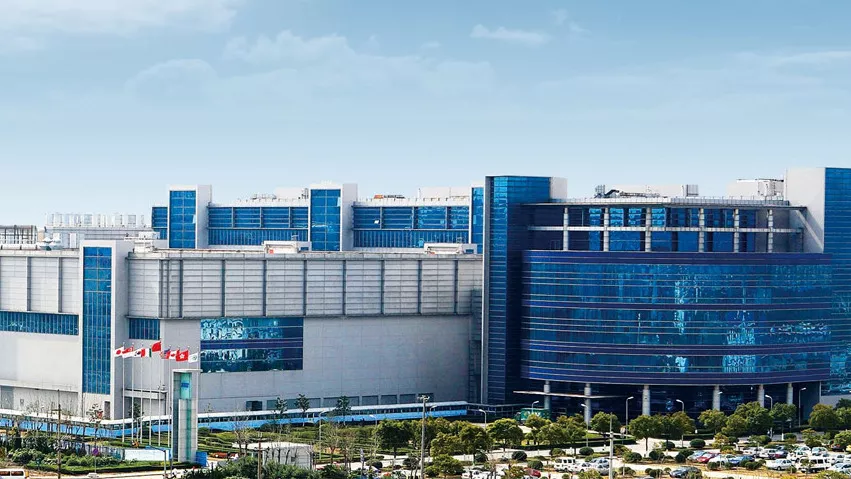The on-the-job rate of personnel has increased significantly, and the logistics has also improved. "At present, the difficulties of logistics and upstream and downstream coordination have been gradually lifted." On June 2, xuzhaoyuan, chairman of Shanghai Chuanyuan Information Technology Co., Ltd., told first finance that except for some employees who continue to work remotely because of the community, other employees have returned to the office.

With the full resumption of work and production in Shanghai, the on-the-job rate of personnel in semiconductor enterprises in Shanghai has increased significantly, and the logistics has also improved. In addition to the key enterprises such as Huahong, SMIC, riyueyue, etc., which were always in production during the epidemic period, most enterprises such as Zhongwei and Shanghai silicon industry have entered the state of resumption of work. Zhangjiang High Tech, which has gathered many leading semiconductor enterprises, has nearly 70% of the enterprises in the two areas of the power collection port and the Technology Innovation Zone, and about 50% of the personnel are on duty.
Ju long, global vice president of semi (International Semiconductor Industry Association) and President of China, said in an exclusive interview with China business recently that it is expected to take weeks or even months for the supply chain to fully return to normal. In the process of promoting the resumption of work and production, we should not only pay attention to large enterprises, but also pay attention to the recovery of small and medium-sized enterprises upstream and downstream of the supply chain and the smooth logistics.
As a high-tech company independently researching and developing full flash array AFA technology and products, xuzhaoyuan believes that some of their material supply has been impacted by the epidemic in the short term, but in the medium and long term, the entire integrated circuit industry and market will not be affected, but will benefit from China's Digital Transformation Driven by the state. The fact that China is the largest single market in the world will not change.
In his opinion, next, the technology industry will become the focus of China's development. The industry expects that the national policy will issue a recovery and revitalization plan focusing on domestic independent and controllable technology research and development in the second half of the year, so as to usher in a strong rebound in the market.
In terms of the pattern of the global semiconductor market, Julong said that China is still the largest and fastest-growing single market in the world. In 2021, the global total sales of semiconductor manufacturing equipment exceeded US $100billion, and Chinese Mainland accounted for one third of the market, making it the largest destination for equipment expenditure. Therefore, the Chinese market and opportunities are still there, and a large number of multinational enterprises in the semiconductor field will continue to pay attention to the Chinese market.
Julong believes that the global semiconductor production capacity shortage has not shown any obvious signs of easing this year. Although the demand of the end market is not so high in some segments, the demand of the industrial and automotive industries is still large. Therefore, overall, this year's production capacity is still insufficient.
According to the forecast at the beginning of this year, the sales volume of the global semiconductor industry will exceed 600billion US dollars, an increase of 9%. Affected by the recent domestic epidemic, the data will be revised, but it is expected to maintain positive growth. Semi recently reported that the global demand for semiconductor applications in various fields continues to increase. In 2022, the total equipment expenditure of global front-end Fabs will grow by 18% over the previous year, reaching a record high of $107billion, and has increased significantly for three consecutive years.
"At the beginning of 2020, the market demand also fell rapidly, but then there was a strong rebound. Therefore, for semiconductors, the impact of the epidemic will not be particularly intense, and the demand is." Ju Long said that in 2020, under the epidemic and trade friction, the global economy will decline, but the development of the semiconductor industry will be better than expected. China's position in the global market has also changed. With the promotion of localization, the products of China's local equipment enterprises continue to pass the production line verification, and the mature process in many fields has broken the monopoly and entered the stage of commercial supply. However, Ju Long pointed out that the overall output of China based semiconductor enterprises, including the top 10 enterprises including SMIC and Huahong, still accounts for less than 10% of the global output. Under the risk brought by uncertain factors, it is inevitable for most enterprises to reconsider the supply chain layout in order to better avoid risks, including how to improve the domestic supply chain and whether to adjust the layout among different regions to speed up the pace of global operation.
Therefore, while promoting localization, Julong suggested that, on the one hand, we should continue to invest in research and development, adhere to innovation, and help Chinese enterprises enter the international market to gain stronger competitiveness. On the other hand, the government and enterprises should strengthen communication to make the entire supply chain safer, and make the development of multinational enterprises more assured in China.
As a professional platform for the global semiconductor industry chain ecosystem, semi was invited last year to participate in the Shanghai global investment promotion conference as one of the top ten investment partners in Shanghai in 2021, and will continue to participate this year. Ju Long said that at the critical moment of orderly promoting the resumption of work and production, semicon China, the world's largest professional semiconductor exhibition held in Shanghai every year, will also be held from October 5 to 7 this year. At present, hundreds of leading Chinese and foreign semiconductor enterprises have confirmed their participation at the first time.